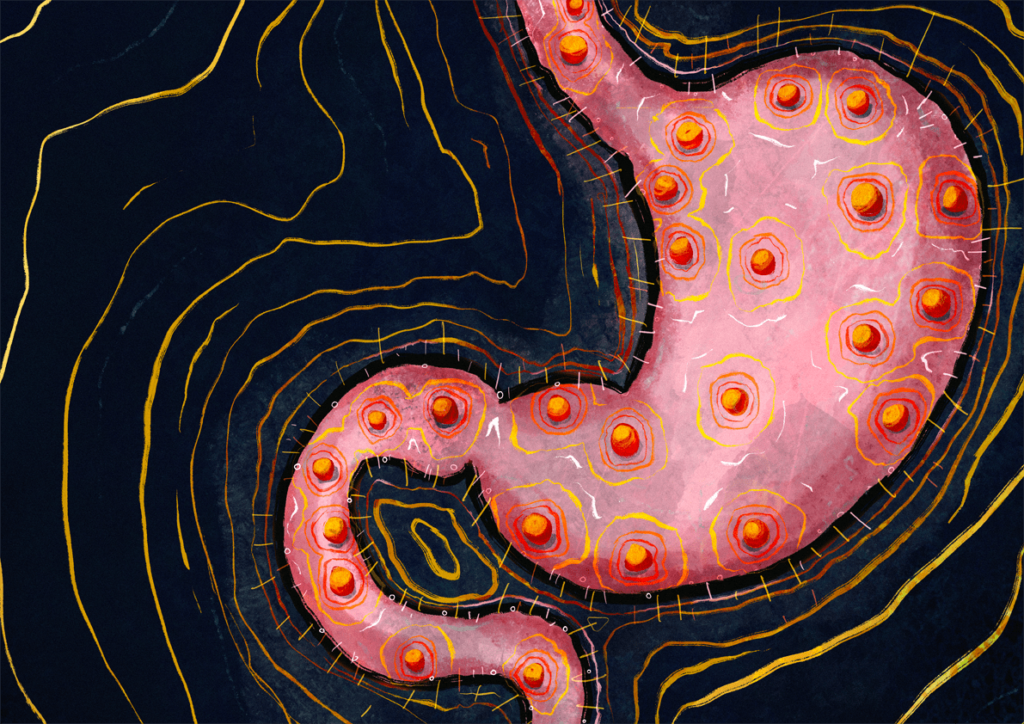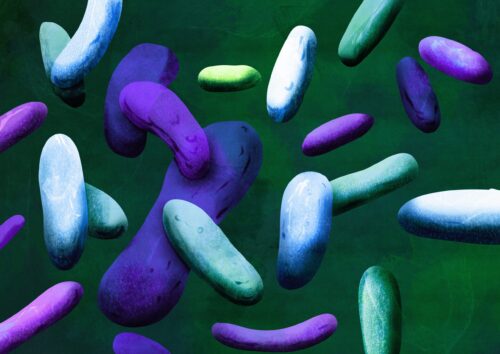Food is the ultimate source of energy for every living organism (not the autotrophs who are the chefs of the food chain), and it forms a fundamental part of our lifestyle. Not just for nutrition, we foodies just love trying out new delicacies around, because we live to eat! However, at times, this ritual of relishing yummy dishes gets interrupted by episodes of nausea, vomiting, diarrhea, dehydration, etc. This happens when the food we love gets contaminated by pathogens, disrupting the alimentary canal’s normal functioning, leading to food poisoning.
The nitty gritty first!
Food poisoning occurs due to the consumption of food items contaminated with pathogens which can be bacteria, viruses, fungi, or parasites. Certain items are more commonly associated to cause food poisoning, such as undercooked meat, eggs, and fish, dairy products, fruits, vegetables, etc. Pathogens present in the food items consumed meddle with the normal working of the stomach and intestine, which are involved in the digestion and absorption of food. The most common symptoms experienced include stomach cramps, loss of appetite, vomiting, and diarrhea, which come up within hours or days. Our digestive system is also involved in absorbing water, which also gets perturbed during this state. The body starts losing excessive fluids because of diarrhea and vomiting, leading to dehydration, which can get fatal for some!
How does it work?
As food poisoning is something caused by a diverse group of pathogens, the time span and mechanism of developing the symptoms can vary. For example, bacteria such as E.coli or viruses like Rotavirus can cause food poisoning lasting up to a week. Food contaminated by Staphylococcus aureus can cause symptoms to develop within hours after consumption. And as I mentioned before, the strategies to disrupt the digestion process also differ, so, it will surely be impossible for me to explain all of them here. For ease, I shall pick one from the lot.
Food poisoning caused by certain strains of Staphylococcus aureus is quite common around the world. Contamination of food items with the bacterium is mainly due to improper handling and
unhygienic practices, and even via dust particles. These strains produce compounds known as
enterotoxins. They are exotoxins produced by bacteria that affect the functioning of the intestine. Enterotoxins produced by staphylococcus are resistant to extremes of temperature and pH, and can even withstand the proteolytic activity of digestive enzymes. The bacteria get killed, but these toxins make it through, eventually succeeding in infecting the gut. It is said that the enterotoxins activate the vagus nerve, which controls processes such as digestion, respiration, and heart rate. Activation of the vagus nerve leads to the transmission of signals to the vomiting center present in the brain. They can also penetrate the lining of the gut and stimulate our immune system. One of the most important ways in which the immune system reacts against a pathogen is by the process of inflammation, which does cause us discomfort. Triggering the inflammatory process can lead to us developing symptoms such as nausea, vomiting, diarrhea (at times), and lesions appearing in the stomach and small intestine.

Similarly, other notorious beings have their way of infecting the gut and causing trouble. However, the symptoms and their severity tend to be different for different people. Certain groups of people are more vulnerable than others. Old people, children, and pregnant women are more affected by enemies of the gut because of an underdeveloped or weakened immune system, making them inefficient to fight off those germs.
How to cheer up our gut?
Well well, no one would possibly sit idle with an upset tummy, because trust me, one can somehow manage to bear fever or headache, but not a sick stomach. Usually, the symptoms wear off within hours or days, the only crucial thing one needs to do is to stay hydrated. Food poisoning tends to disturb the electrolyte balance, which is maintained by absorption of water and excretion of excess water. As water isn’t properly absorbed during this state, it can lead to dehydration. The lost water should be replaced by consuming water, fruit juices, or an oral rehydration solution. If the condition gets out of hand, medicines such as antibiotics are always there to the rescue.
Doctors also recommend probiotics to cure the gut and prevent subsequent infection. Certain bacteria form colonies in our digestive tract and work to maintain the healthy process of digestion. Probiotics are these live bacteria consumed in order to restore or maintain the population of good bacteria in our tummy. The best example of a probiotic consumed by many is Yakult. Some of the food items that we consume on a regular basis, such as yogurt, cheese, pickles, and kimchi also contain these live microbes.
Studies have shown that probiotics are helpful in preventing and curing symptoms of food poisoning. Probiotics improve the working of the immune system and enhance the body’s resistance to infections of the gastrointestinal tract. Consumption of probiotics can help reduce the duration of gut illness, whereas regular consumption of the same can help in maintaining a healthy gut.
Let’s keep the germs at bay!
Prevention is better than cure. Improper handling can lead to contamination of food items and has led to mass food poisoning in several regions around the world. Sterile, temperature-controlled conditions while preparing food is paramount, be it on a domestic or commercial scale. For instance, meat and eggs need to be properly cooked to the desired temperature. Perishable food items should be properly refrigerated to prevent spoilage and colonization by pathogens. Fruits and vegetables need to be washed properly before being cut. Last but not the least, we humans should take proper care when preparing delicacies because one would hate having a yummy plate of chili chicken one day and fall sick the other day. We all should incorporate a balanced diet into our routine, with food items having probiotics to restore and maintain the integrity of our gut.
References:
- Argudín, M. N., Mendoza, M. C., & Rodicio, M. R. (2010). Food Poisoning and Staphylococcus aureus Enterotoxins. Toxins, 2(7), 1751–1773. https://doi.org/10.3390/toxins2071751
- Food poisoning – Symptoms and causes. (2020, June 26). Mayo Clinic.
https://www.mayoclinic.org/diseases-conditions/food-poisoning/symptoms-causes/syc-
20356230#:%7E:text=Food%20poisoning%2C%20also%20called%20foodborne,common%20causes%20of%20food%20poisoning. - Food Poisoning Symptoms. (2022, July 28). Centers for Disease Control and Prevention.
https://www.cdc.gov/foodsafety/symptoms.html#:%7E:text=Food%20poisoning%20symptoms%20can%20be,Upset%20stomach - Foods Linked to Illness. (2022, February 22). Centers for Disease Control and Prevention.
https://www.cdc.gov/foodsafety/foods-linkedillness. - Hennekinne, J. A., de Buyser, M. L., & Dragacci, S. (2012). Staphylococcus aureus and its food poisoning toxins: characterization and outbreak investigation. FEMS Microbiology Reviews, 36(4), 815–836. https://doi.org/10.1111/j.1574-6976.2011.00311.x
- People With a Higher Risk of Food Poisoning | Food Safety | CDC. (n.d.). CDC.
https://www.cdc.gov/foodsafety/people-at-risk-food-poisoning.html - T, A., A, B., T, A., H, T., H, B., & A, M. (2017). Bacterial Probiotics their Importances and
Limitations: A Review. Journal of Nutrition and Health Sciences, 4(2).
https://doi.org/10.15744/2393-9060.4.202 - Treatment for Food Poisoning. (2021, March 15). National Institute of Diabetes and Digestive
and Kidney Diseases. https://www.niddk.nih.gov/health-information/digestive-diseases/food-
poisoning/treatment
. . .
Writer
Sreelakshmi S Kumar
Illustrator
Jack Cowley
Editor
Bhargavi Nerikar

